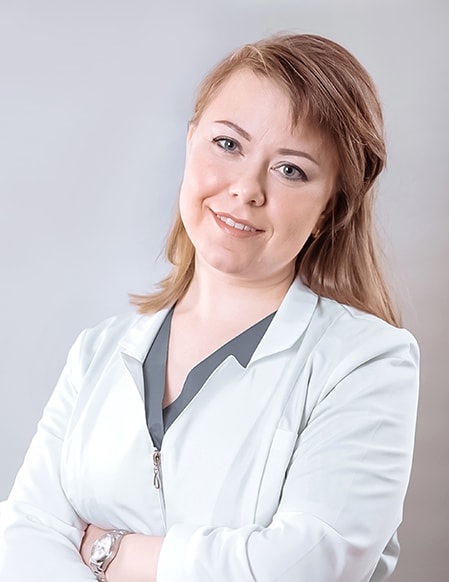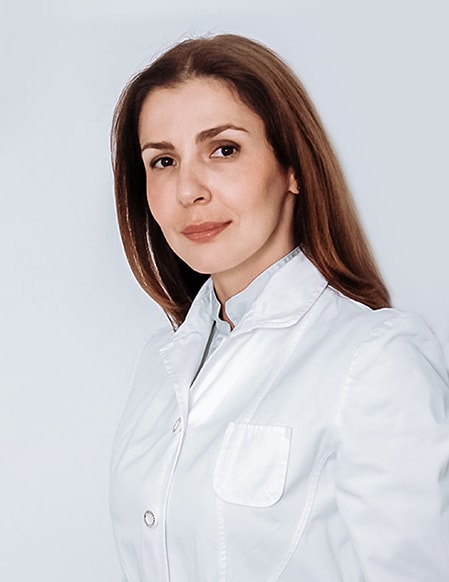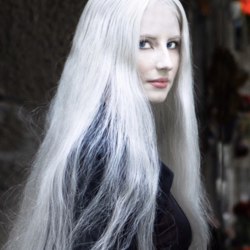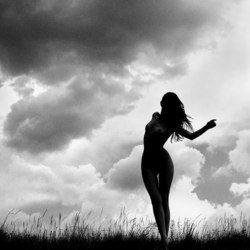Key points
Malar bags are deposits of fatty tissue located at the border between the lower eyelids and cheekbones.
Malar bags and bags under the eyes are different cosmetic flaws. Under-eye bags are located directly in the area of the lower eyelids; malar bags are located below, in the area of the zygomatic eminences. This is why they have different correction methods.
Without surgery, it is almost impossible to completely get rid of paint sacks. This is the most effective way of eliminating them. Radical, but effective.
After all, this requires the removal of fat cells from the area, which can only be removed surgically. The other remedies mostly disguise the smudges, nothing more.
Causes of paint sacks
Malar sacks (suffus) are subcutaneous masses of fatty tissue on the surface of the cheekbones. Externally, the hernias look like swollen, triangular-shaped swellings.
Due to age-related changes in facial tissues, the fat sack slips away over time. Deepening of the nasolabial folds, drooping cheeks and the formation of pronounced lacrimal furrows occur. Microcirculation is often impaired in the area of hernias and the skin takes on a bluish or reddish hue.
A cheekbone hernia makes the face look swollen and painful. A person with suffixes always looks at least 10 years older than their age. Constant complexes due to the aesthetic defect greatly reduce a person's quality of life and can eventually lead to depression.
Normally, as the skeleton grows, fatty tissue is distributed evenly across the surface of the cheeks. In some people, the nasolacrimal sulcus, the skin fold at the inner corner of the eyes, prevents the natural distribution of fat. Fatty tissue accumulates and thickens, forming a malar sack.
A key role in the formation of sufus on the cheekbones is played by hereditary facial characteristics. Therefore, the aesthetic defect can already be noticeable in childhood, increasing in size as the person grows older.
The formation and enlargement of fatty bags is promoted:
- hormonal disorders;
- chronic sleep deprivation;
- Enlargement (hypertrophy) of the eye muscles;
- frequent swelling due to kidney disease, heart disease and other organs;
- age-related tissue ageing;
- abuse of tanning;
- Overweight or severe weight loss;
- Improper insertion of fillers.
A hernia is caused by serious abnormalities in the subcutaneous fatty layer of the skin. Therefore, the defect cannot be treated with creams, patches, massages or diuretics. Some smoothing of the bags is possible by reducing the swelling, but after a while the swelling reappears.
The malar formation is the zygomatic region, bounded above and below by the ligaments of the ORL and ZCL. It is one of the few areas on the face that is literally "stuffed" with fat packs of all levels.
On the bones lies a small deep fat pack Preperiosteal (not highlighted by all doctors).
The deepest and most saturated fat packs are the soof (+ cheek medial cheek). Beneath the skin is the superficial medial cheek.
Because ligaments are true - extending from the bone to the skin - their main feature is that they don't let the fat packs slide anywhere! And with age, a 'sack' forms.
- Note that almost all obese and overweight people don't exhibit any malarial growths: it's strange - you seem to have a lot of fat, but you can't see a malarial sack.
- It's as simple as that: it is the shrinkage and slippage of fat packs and exposure of ligaments that cause the formation of cheekbone bags.
- The deep Medial cheek (medial cheek) together with the superficial Nasolabial comp. (nasolabial cheek) thin at the top, as if exposing the ZCL ligament, with age.
- In fact, the 'contrast' of the malar area depends on the degree of age-related changes in the fat pouches. In young patients with a developed SOOF, and a "poor" mid-cheeked g. p. the malar area can be pronounced from an early age.
- In patients whose upper mid-cheek and nasolabial pouches thin with age, the lower edge of the malar sac is milder or not expressed at all.
- If there is a tendency for swelling (adipose tissue is great at 'agrigating', storing water), painters are also great at showing up.
The most important clarification
Facial fat is radically different from the fat on your butt or thighs: it's not cellulite fat!
There are three types of fat cells - adipocytes (until 10 years ago, there were only two): white, beige and brown. However, doctors and scientists also distinguish subspecies of adipocytes in practice. All facial fat packets, together with fat cells, have been with us since our childhood; the composition and morphology of this facial fat is special and comparing it with body fat is not correct!
Now that we understand how everything is formed and what it consists of, let's work out how you can remove the paint sack.
Methods for getting rid of paint sacks
Many methods are used to correct fat hernias on the cheekbones, but not all of them have a positive result.
If one chooses a non-surgical correction method, the internet is literally overflowing with different correction options.
First, we'll tell you about the widely known ways that don't work:
- ⚡RF procedures do not work. RF radiation simply cannot penetrate as deeply and affect the fat packs.
- ⚡Some doctors practise local ULTERA therapy in the supine area. There are results, but it all depends on the patient - for some people 2-3 sessions are enough, for others a course of 4-6 visits is necessary.
- ⚡ Thread correction (pull the painter upwards) - does not work: it is unrealistic to redistribute the fat pack evenly with sutures, as the same ligaments at the top and bottom prevent this.
- ⚡ And the most popular question: lipolytics in suf. Let's face it - NO.
First of all, once again: fat in the face is not fat on the butt. Direct lipolytics are simply dangerous to inject into the face (there are no drugs certified in the Russian Federation for injecting into the facial area!).
The latest generation of lipolytics (not direct, there are even products specially formulated for this area) do not destroy adipocytes, but only slightly reduce their size. Some of these drugs are mesotherapy cocktails that improve microstimulation and lymphatic drainage, but have no effect on fat deposits. Therefore, the efficacy is also low.
Hardware and injection methods
Various drainage and tissue tightening options are used to correct sufus. The most commonly used: ultrasound or radiofrequency lifting, fractional thermolysis and microcurrent drainage.
Injection methods are also used:
- contouring with fillers to add volume around the bags;
- Lipofilling with the patient's own fat cells;
- the breakdown of fat with lipolytics.
The effects of hardware and injectable treatments are short-lived and the efficacy is low. Malar bags become less noticeable for a while by improving the tissue and adding volume around the hernia. Positive changes can only be achieved with a minor defect. With pronounced suffusions, there will be no meaningful result.
Plastic surgery
Lower eyelid plastics, midface lifts and thread lifts are used to correct black bags. These types of plastic surgery do not always lead to positive results. For example, after removal of fat deposits near the eyes during blepharoplasty, the bags may become more visible.
The only way to get rid of cheekbone bags is to remove the fat cells. The best option is spot liposuction of the problem area. This is done using lipoaspiration methods: radiofrequency, laser or ultrasound.
In addition to removing fat, the procedures noticeably tighten the tissue and smooth out skin texture. Removed fat cells do not regenerate - the result of liposuction is lifelong.
Specialist advice
For the removal of cheekbone bags, make an appointment with the experienced plastic surgeon Arthur Khristenko. During a face-to-face appointment, the doctor will assess the severity of the hernia, your health, tissue and skin peculiarities. The doctor will explain in detail about the operation and the recovery period.
Your surgeon will refer you for tests to find out if there are any contraindications. You will have to have a number of blood and urine tests, an ECG and X-rays checked by a general practitioner.
Contraindications:
- diabetes mellitus, oncology;
- blood clotting disorders;
- a tendency towards keloid scars;
- acute infectious and organic diseases;
- complex chronic internal organ pathologies;
- pregnancy, lactation.
If liposuction cannot be performed due to contraindications, your doctor will be sure to find an alternative method to correct the bags. You will get the best possible results with the longest possible duration.
How liposuction is performed
Microliposuction of malarial bags is often performed under local anaesthesia, with some indications under general anaesthesia.
Stages of the procedure:
- Decontamination of the treatment area and marking of the area;
- Insertion of thin cannulas (tubes) into the fatty tissue through microscopic incisions;
- exposure of fatty tissue to radio waves, laser or ultrasound to liquefy it;
- removal of prepared fat by means of a vacuum through cannulas;
- stitches and a compression bandage.
Patients generally leave the clinic on the day of the procedure, and after general anaesthesia they are placed in a comfortable room for an average of 24 hours.
Recovery from sufficient removal
Swelling and bruising go away within 3-7 days, after which you can go to work. A compression bandage must be worn for the first 1-2 days after the operation and then for some time at night.
You will also have to limit your lifestyle somewhat: avoid strenuous exercise, bathing, sunbathing, heavy facial exposure and drinking alcohol.
Opinions/feedback from cosmetologists
Swelling of the lower eyelids and zygomatic areas can also be associated with chronic fatigue, sleep and rest disorders, chronic heart, lung and kidney diseases. These conditions are not indications for blepharoplasty with the correction of malar bags, but require consultation with a specialist for the selection of adequate therapy.
Opinion of reputable international sources on paint bags
Q&A
The appearance of bags under the eyes is usually due to the loss of elasticity in the tissue as a result of ageing. A hereditary factor also plays a role: peculiarities of the facial skeleton, ligamentous apparatus and tissue structure with elements of hyperelasticity. In these cases, "suffixes" appear at a relatively young age.
Malar sacks have a semicircular shape and a pronounced lower border formed by the suborbital sulcus (skin-cuspidal ligament). This furrow and puffiness in the zygomatic areas give the face a dull and tired expression.
Swelling of the lower eyelids and zygomatic areas can also be associated with chronic fatigue, sleep and rest disorders, chronic heart, lung and kidney diseases. These conditions are not indications for blepharoplasty with the correction of malar bags, but require consultation with a specialist for the selection of adequate therapy.
Feedback from private users
The injections were quite painful - when the drug gets under the skin, it causes an unbearable burning sensation, as if you had poured sulphuric acid under it. For the first hour and a half, the face at the puncture point glows an unhealthy crimson colour. The initial swelling goes down after 24 hours.
Unfortunately, even with comprehensive therapy (injections+massage) to combat malarial bags, lipolytics proved to be completely useless. Fifteen thousand roubles wasted.
If you have a problem like black bags, I recommend not wasting your time and finances on dubious procedures. In this case, cosmetology is powerless! I checked it myself. I'm not even talking about patches, masks and creams - they're a dead giveaway.
Prices
The cost of the procedure depends on the method of lipoaspiration, the amount of fatty tissue on the cheekbones and the type of anaesthetic used.
Before and after photos
Paint sacks
Men
Cheekbone bags are unaesthetic, cushion-like formations on the cheekbones formed from fat. They can also be called 'cheekbone bags', 'puffiness', 'suffusions', 'sagging on the cheekbones', etc.
This cosmetic defect can already be visualised in adolescence, but in most cases it is typical for patients in their 30+ years of age. The problem occurs in both women and men.
Conclusion
The removal of malar bags can be successfully combined with other types of correction in one operation: forehead lift, midface lift, thread lift. The complexity and extent of the proposed surgical intervention depends on the individual characteristics of the patient.
































